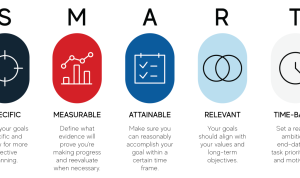The fashion and apparel industry has undergone a seismic shift, moving from traditional brick-and-mortar stores to the fast-paced, highly competitive world of e-commerce. To not just survive but thrive in this digital landscape, brands must master the art of online sales and transactions. This article will serve as your comprehensive guide to understanding and implementing strategies that will drive traffic, convert visitors into loyal customers, and ultimately, skyrocket your sales.
Understanding the Modern Fashion Consumer
Today’s consumer is more than just a shopper; they are a researcher, a critic, and a trendsetter. They are influenced by social media, value authenticity, and expect a seamless shopping experience. They are looking for more than just a product; they want a story, a connection, and a brand that aligns with their values.
This means your marketing and sales strategies must be holistic. You can’t just sell a t-shirt; you have to sell the lifestyle that comes with it. You need to create a community around your brand and make your customers feel like they are part of something bigger.
1. Optimize Your E-commerce Store for Conversion
Your website is your storefront. It needs to be visually appealing, user-friendly, and optimized for sales.
- High-Quality Visuals: This is non-negotiable. Use professional, high-resolution photos and videos that showcase your products from multiple angles. Consider including a 360-degree view or a video of a model wearing the clothes to give customers a better idea of the fit and drape.
- Intuitive Navigation: A cluttered or confusing website will lose customers instantly. Make sure your categories are clear and that customers can find what they’re looking for with minimal clicks. A robust search function is also a must-have.
- Detailed Product Descriptions: Don’t just list the features; tell a story. Describe the fabric, the fit, the inspiration behind the design, and suggest how to style the item. Include sizing charts and clear information about care instructions.
- Streamlined Checkout Process: A complicated checkout process is the number one reason for abandoned carts. Keep it simple, require as little information as possible, and offer multiple payment options. Consider guest checkout to remove the barrier of creating an account.
- Mobile Optimization: Over half of all e-commerce traffic comes from mobile devices. Your website must be fully responsive and provide a seamless experience on smartphones and tablets.
2. Leverage the Power of Social Media
Social media is the heartbeat of the modern fashion industry. It’s where trends are born, where brands connect with their audience, and where sales are made.
- Choose the Right Platforms: Don’t try to be everywhere at once. Focus on platforms where your target audience spends their time. Instagram, TikTok, and Pinterest are particularly strong for fashion brands due to their visual nature.
- Create Engaging Content: Go beyond product photos. Share behind-the-scenes glimpses, styling tips, customer testimonials, and user-generated content (UGC). Run polls, host Q&A sessions, and create short, engaging videos that entertain and inform.
- Use Social Commerce Tools: Platforms like Instagram Shopping and Pinterest’s “Buyable Pins” allow customers to purchase products directly from your social media posts, shortening the path from discovery to transaction.
- Collaborate with Influencers: Partnering with micro-influencers and content creators who align with your brand’s aesthetic and values can significantly expand your reach and build trust with new audiences.
3. Implement Effective Digital Marketing Strategies
To drive traffic to your store, you need a multi-faceted digital marketing approach.
- Search Engine Optimization (SEO): Optimize your product pages and blog content with relevant keywords so that potential customers can find you when they search on Google. Use keywords like “sustainable linen dress” or “men’s streetwear hoodies.”
- Content Marketing: Start a blog that provides value to your audience. Write articles about fashion trends, sustainable practices, or interviews with designers. This builds authority and keeps customers engaged.
- Email Marketing: Build an email list and use it to announce new arrivals, sales, and exclusive offers. Segment your list to send personalized emails based on past purchases and browsing behavior.
- Paid Advertising: Use targeted ads on Google and social media platforms to reach new audiences. You can target specific demographics, interests, and even people who have previously visited your website (retargeting).
4. Build Customer Loyalty and Retention
A one-time customer is good; a repeat customer is gold. Retaining customers is more cost-effective than acquiring new ones, so make loyalty a priority.
- Exceptional Customer Service: Respond to inquiries promptly and professionally. A positive customer service experience can turn a frustrated customer into a brand advocate.
- Loyalty Programs: Reward repeat customers with exclusive discounts, early access to sales, or special perks. This makes them feel valued and encourages them to keep coming back.
- Personalization: Use data to recommend products based on a customer’s purchase history. A simple “You might also like…” section on your website can significantly boost sales.
- Solicit and Act on Feedback: Show your customers that their opinion matters. Ask for reviews and feedback and use it to improve your products and services.
5. Embrace Sustainable and Ethical Practices
Today’s consumer is increasingly conscious of the environmental and social impact of their purchases. Brands that are transparent about their supply chain and committed to sustainability and ethical labor practices are gaining a competitive advantage. Highlight your use of eco-friendly materials, fair labor practices, and charitable initiatives. This not only attracts a new generation of shoppers but also builds a strong, positive brand identity.
Conclusion
The world of fashion and apparel e-commerce is constantly evolving, but the core principles of success remain the same: understand your customer, create a seamless shopping experience, and build a strong, authentic brand. By implementing these strategies, you can not only increase your sales but also build a thriving, loyal community around your brand that will last for years to come.







